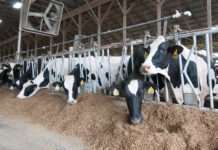Cold Temperatures Expected To Affect Wheat in Kansas
Drought-stressed plants more likely to suffer from cold temperatures.
MANHATTAN, Kan. – The sudden sharp drop in temperatures across Kansas during the week of Nov. 10-15 will certainly cause the wheat crop to go into dormancy. Whether it will injure the wheat to any degree depends on several factors, said Jim Shroyer, K-State Research and Extension crop production specialist.
“The moisture level in the topsoil will be important. Soil moisture was generally good in most of the state going into October. But the warm temperatures in October caused some of the wheat in the state to put on excessive amounts of topgrowth, which dried out the soil,” Shroyer said.
The cold weather will be more likely to cause injury to wheat if the plants were showing drought stress symptoms, he said. Also, dry soils will get colder more easily than wet soils.
Another important factor in wheat’s response to the cold is whether the wheat had time to become properly cold hardened, he added.
“Although the weather was warm overall in October and early November, there may have been enough cold nights to have allowed the wheat to develop cold hardiness,” Shroyer said.
The extent of the unusually large and rapid drop in temperatures from well above normal to well below normal is a concern, he added. If the wheat did not develop sufficient cold hardiness, it would become more susceptible to injury from the recent cold snap.
“We likely won’t know for sure about cold injury until next spring as the wheat comes out of dormancy,” he said.
The first thing producers will be seeing is a lot of burndown of the wheat from these cold temperatures, Shroyer explained. If the wheat was bigger than normal, the plants may look “rough” with a lot of brown dead-looking foliage on the soil surface, he said.
“That doesn’t mean the plants are dead, however. The important factor will be whether the crown below the soil surface remains alive. Having a well-developed secondary root system will help the plants survive,” Shroyer said.



